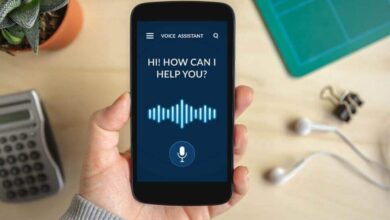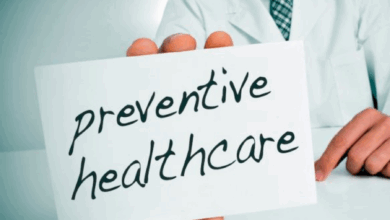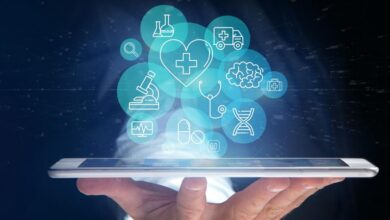How Health Apps Handle Your Data—And What Needs To Change

How Health Apps Handle Your Data—And What Needs to Change is a critical examination of the intersection between technology and health management in our digital age. With the rapid growth of health applications, understanding how they collect, store, and use personal data has never been more important. These apps often collect a variety of information, from fitness activities to dietary habits, raising questions about privacy and security that every user should consider.
As we delve into this topic, we’ll explore the common data collection practices, the methods of storage and encryption, and the essential user consent mechanisms that should be in place. By highlighting the regulatory framework and ethical considerations, we will also discuss how current practices might evolve to better protect user data in the future.
Introduction to Health Apps and Data Handling
Health apps have become integral to the modern healthcare landscape, offering users the ability to monitor various aspects of their health from the convenience of their smartphones. These applications serve a multitude of purposes, from tracking physical activity to managing chronic diseases and even facilitating telehealth consultations. The significance of health apps lies not only in their ability to empower users with health insights but also in their potential to enhance overall healthcare delivery through data-driven approaches.
The data collected by health apps encompasses a wide array of information that can significantly impact user health outcomes. Common types of data include personal identification details, health metrics such as heart rate and blood pressure, dietary information, medication adherence, and mental health assessments. While these data points can lead to personalized health recommendations and more effective treatments, they also raise critical concerns regarding privacy and data security. The handling of sensitive health information, if not done correctly, can lead to unauthorized access, data breaches, and misuse of personal health data.
Types of Data Collected by Health Apps
Health apps collect various types of data that can be categorized into several key areas. Understanding these categories is essential for users to appreciate the breadth of information they share and its implications.
- Personal Identification Information: This includes names, email addresses, phone numbers, and sometimes, payment information. Such data is crucial for user account management but poses risks if compromised.
- Health Metrics: Many health apps track vital signs and performance metrics, such as heart rate, sleep patterns, and physical activity levels. This data is often used to generate health insights and recommendations.
- Behavioral Data: Some apps monitor user habits, like exercise routines, dietary choices, and medication adherence. This information can be used to promote healthier lifestyle choices.
- Health History: Users may input past medical conditions, treatments, and family health history. This data is vital for tailored health advice but is also sensitive in nature.
Potential Risks Associated with Data Handling
The collection and management of health data are not without risks, which can have serious implications for users. Awareness of these potential threats is paramount in today’s digital health environment.
- Data Breaches: Health apps are prime targets for cyberattacks due to the sensitive nature of the data they handle. Unauthorized access can lead to the exposure of personal health information.
- Privacy Invasion: Some apps may share data with third parties or advertisers without explicit user consent. This practice can infringe on user privacy and trust.
- Inaccurate Data Use: If health apps do not maintain high standards of data accuracy, users may receive misleading health recommendations, potentially leading to harmful health decisions.
- Regulatory Compliance Issues: Health apps must comply with regulations like HIPAA in the U.S. and GDPR in Europe. Non-compliance can lead to legal consequences and loss of user trust.
Data Collection Practices: How Health Apps Handle Your Data—And What Needs To Change
Health apps are increasingly popular tools for managing personal well-being, but their data collection practices raise important considerations for users. Understanding how these apps gather, store, and share data is crucial for making informed choices about personal health management.
Health apps collect user data through various methods, including direct input from users, device sensors, and integration with other health-related services. For example, users may voluntarily input information such as weight, dietary habits, or fitness goals. In contrast, apps can also gather involuntary data, such as location information or usage patterns, without explicit user consent. Recognizing the difference between voluntary and involuntary data sharing is vital for users who want to maintain their privacy while benefiting from app functionalities.
Types of Health Data Collected
The diversity of data collected by health apps can be categorized into several types, each serving different purposes for user health management and app functionality. The following table Artikels these categories along with examples of the data collected.
| Type of Health Data | Description |
|---|---|
| Activity | Data related to physical activities such as steps taken, exercise duration, and calories burned. |
| Nutrition | Information about dietary intake, including calories consumed, macronutrient breakdown, and meal patterns. |
| Sleep | Insights into sleep patterns, including duration, quality, and sleep cycles. |
| Heart Rate | Monitoring of heart rate data, often collected via wearable devices. |
| Mood Tracking | Data regarding emotional well-being, capturing user-reported mood states and stress levels. |
| Medication Adherence | Tracking of medication schedules, reminders, and dosage compliance. |
“Understanding the scope of data collection by health apps is essential for maintaining privacy while leveraging technology for health improvements.”
Data Storage and Security Measures
When it comes to health applications, the security and storage of user data are paramount. These apps handle sensitive health information, which can include medical history, fitness statistics, and even biometric data. Therefore, ensuring that this data is stored securely and handled with strict security measures is crucial for protecting users’ privacy and maintaining trust.
Health apps utilize various methods for secure data storage, with encryption being a key component. Data encryption involves converting sensitive information into a coded format that can only be deciphered by authorized users. This is often done both in transit—when data is being sent from the user’s device to the app’s servers—and at rest—when data is stored on servers.
Encryption Methods for Health Data Storage
Encryption methods are critical for protecting health data from unauthorized access. The most commonly used encryption techniques include:
- AES (Advanced Encryption Standard): AES is a symmetric encryption algorithm widely accepted for secure data storage. It encrypts data in fixed block sizes and is utilized by many health apps to ensure that sensitive information remains confidential.
- RSA (Rivest–Shamir–Adleman): RSA is an asymmetric encryption method that uses a pair of keys—public and private. It is especially useful for secure data transmission, allowing users to send encrypted data that only the intended recipient can decrypt.
- TLS (Transport Layer Security): This protocol secures communication over a computer network. By encrypting the data during transmission, TLS ensures that health information remains safe from eavesdroppers while traveling between devices and servers.
The importance of these methods cannot be overstated, as they form the backbone of health data protection. However, even with strong encryption, vulnerabilities remain, as evidenced by several high-profile data breaches.
Health apps have faced significant challenges regarding data security. For instance, the well-known fitness app MyFitnessPal experienced a data breach in 2018 that impacted around 150 million users. The breach exposed usernames, email addresses, and hashed passwords, underscoring the potential risks involved in mishandling user data. Similarly, the health tracking application Strava faced scrutiny when it inadvertently revealed sensitive information about military personnel due to its global heatmap feature, which illustrated user activity patterns.
“Data breaches can have serious consequences, not just for users whose data is compromised, but also for the companies involved, leading to loss of trust and potential legal ramifications.”
These examples illustrate the need for continuous improvement in data storage practices and security measures within health applications. As technology evolves, so must the strategies for safeguarding the sensitive health information they manage.
User Consent and Privacy Policies
Health apps have revolutionized how individuals track and manage their well-being, but they also raise significant questions surrounding user consent and privacy policies. These apps often require access to sensitive health information, making it crucial for developers to communicate effectively how this data is collected, stored, and used. A clear understanding of privacy policies is essential for users to make informed decisions about their digital health data.
Standard privacy policy practices in health apps typically include the collection of personal data, how that data is used, and the rights users have regarding their information. A comprehensive privacy policy should not only comply with legal standards but also prioritize transparency, ensuring users are fully aware of what they are consenting to. Informed consent is usually obtained through a user-friendly interface that presents key points of the privacy policy at the time of registration or before data collection begins.
Common Elements of Privacy Policies
When analyzing privacy policies in health apps, several critical elements consistently appear. Understanding these components helps users grasp the implications of their consent. Here are some common elements found in most privacy policies:
- Data Collection: Details on the types of personal and health-related data collected, such as age, weight, medical history, and activity patterns.
- Data Use: An explanation of how the app will use the data, including for purposes such as improving services, marketing, or sharing with third parties.
- User Rights: Information on users’ rights to access, modify, or delete their data, as well as how they can exercise these rights.
- Data Sharing: Conditions under which the app may share data with third parties, including partners, advertisers, or researchers.
- Data Security: Measures taken to protect user data from unauthorized access or breaches, detailing encryption and storage practices.
- Changes to Policy: A statement on how users will be notified of updates to the privacy policy and how these changes may affect their data.
Privacy policies vary in length and complexity, but they should strive for clarity and conciseness. Here is an example of a privacy policy excerpt from a well-known health app:
“Our app collects personal health information to provide tailored health insights and recommendations. We will never share your data with third parties without your explicit consent. You have the right to access your data at any time and can request its deletion through your account settings.”
This excerpt highlights essential aspects of data handling and user empowerment, reinforcing the importance of transparency in health app privacy practices.
Regulatory Framework and Compliance
Compliance with regulations such as HIPAA (Health Insurance Portability and Accountability Act) in the United States and GDPR (General Data Protection Regulation) in Europe is critical for health apps. These regulations are designed to protect user privacy and ensure the secure handling of sensitive health information. The significance of compliance cannot be overstated, as it not only safeguards users’ personal health data but also builds trust between users and app developers.
Regulatory bodies play a vital role in monitoring how health apps manage data. They set the standards for data protection and privacy, ensuring that companies adhere to the legal requirements intended to protect consumers. These organizations work to enforce compliance through audits, penalties, and guidance on best practices in data management.
Importance of Compliance with HIPAA and GDPR
HIPAA and GDPR provide frameworks that health apps must navigate to ensure user privacy and data protection. Compliance with these regulations helps prevent data breaches and misuse of personal information.
– HIPAA Compliance: This U.S. regulation applies primarily to health care providers, health plans, and health care clearinghouses, but it also extends to health apps that handle patient data. Key aspects include:
– Ensuring data confidentiality, integrity, and availability.
– Implementing security measures like encryption and access control.
– Providing users with rights over their health information, including the right to access and amend their data.
– GDPR Compliance: This regulation applies to any organization that processes personal data of EU citizens, affecting many health apps worldwide. Main requirements include:
– Obtaining explicit consent from users for data collection.
– Enabling users to request data deletion or modification.
– Reporting data breaches within 72 hours to the relevant authorities.
Role of Regulatory Bodies
Regulatory bodies are crucial in enforcing compliance and ensuring that health apps adhere to data protection laws. Their responsibilities include:
– Monitoring Compliance: These organizations conduct regular inspections and audits to ensure that health apps are following established regulations.
– Setting Standards: They develop guidelines and best practices that help companies understand how to comply effectively.
– Enforcement Actions: Regulatory bodies can impose fines or sanctions on companies that fail to comply with laws, prompting organizations to take compliance seriously.
Gaps in Current Regulations and Suggested Improvements, How Health Apps Handle Your Data—And What Needs to Change
Despite the established frameworks, there are notable gaps in current regulations that need addressing. Improvements can enhance data protection in the rapidly evolving health app landscape.
– Inconsistent Regulations: Laws vary significantly across regions, leading to confusion for app developers. A more harmonized approach could simplify compliance and enhance protection globally.
– Dynamic Data Challenges: Current regulations may not adequately address the challenges posed by emerging technologies such as AI and machine learning in health apps. Regulations should evolve to include guidelines for these technologies, ensuring they respect user privacy and data security.
– User Awareness: Current compliance mechanisms often prioritize corporate adherence over consumer education. Improving user understanding of their rights concerning data handling would empower them to take charge of their health information.
By addressing these gaps, regulatory frameworks can become more effective in protecting user data while fostering innovation in health technology.
Ethical Considerations in Data Usage
The ethical implications of health data usage by apps resonate strongly within discussions on user privacy and the societal impact of technology. As health applications become increasingly prevalent, it is essential to examine the balance between the benefits of data utilization for healthcare advancements and the potential risks to user privacy and autonomy.
The ethical landscape surrounding health data usage is intricate, often requiring a careful examination of how data is collected, processed, and shared. Developers and healthcare providers must navigate the fine line between leveraging data for improved health outcomes and safeguarding the privacy of individuals. This duality can lead to numerous ethical dilemmas, as the urgency for innovative health solutions often competes with the fundamental rights of users to control their personal information.
Benefits Versus Privacy Trade-offs
The advantages of health apps are manifold, providing users with personalized insights, health tracking, and real-time feedback. However, these benefits come with inherent privacy trade-offs. Understanding these dynamics is crucial for making informed choices about using health apps.
The following points highlight the user benefits alongside the corresponding privacy risks:
- Personalized Health Insights: Users gain tailored feedback and recommendations based on their specific health data, enhancing engagement and adherence to health plans. However, this necessitates extensive data collection, increasing exposure to privacy breaches.
- Real-time Monitoring: Continuous tracking of vital metrics allows for timely medical interventions. Nevertheless, constant data sharing with third parties raises concerns over who ultimately has access to sensitive health information.
- Community Support: Many apps facilitate user communities for shared experiences and motivation. This communal aspect can create a sense of belonging but may also lead to the unintentional dissemination of personal health information.
- Research and Development: Aggregated data from health apps can significantly contribute to medical research. However, the ethics of using user data for research without explicit consent remains a contentious issue.
“The ethical approach to data usage in health apps is not just about compliance but a commitment to respect user autonomy and privacy.”
Case Study: Ethical Scrutiny of a Health App
One notable example of ethical scrutiny is the case involving a popular fitness tracking app that was found to share user data with third-party advertisers without explicit consent. This revelation sparked widespread outrage and highlighted the thin line between user benefits and privacy violations. The app, which marketed itself as a tool for health improvement, had not sufficiently communicated how user data would be used, leading to a significant backlash from its user base.
In response to the growing concerns, the app developers were compelled to revise their privacy policies and implement more transparent data-sharing practices. This case illustrates the critical need for ethical standards in the design and functionality of health apps, emphasizing that user trust is paramount and can be easily jeopardized by data misuse.
Through such scenarios, it becomes evident that ethical considerations in health app data usage are not merely theoretical; they have real-world implications affecting user confidence and the overall integrity of digital health solutions.
Future Trends in Health App Data Management
The landscape of health app data management is poised for significant evolution in the coming years. As technology advances, health apps are expected to incorporate smarter, more secure, and user-friendly practices for handling personal data. These changes will not only enhance user experience but also bolster trust and compliance in an increasingly data-sensitive environment.
The integration of artificial intelligence (AI), machine learning (ML), and blockchain technology is set to redefine how health apps manage data. These technologies can streamline data collection and processing while improving security measures, ensuring that user information remains confidential and protected. Moreover, advancements in biometric identification methods and encryption techniques will further enhance data protection.
Emerging Technologies Enhancing Data Security
Recent innovations in technology are paving the way for enhanced data security within health applications. The following are some key technological trends that are anticipated to enhance the way health apps safeguard user data:
- Artificial Intelligence (AI): AI algorithms can analyze user behavior to detect anomalies in data access patterns, alerting users and developers to potential security breaches in real-time.
- Blockchain Technology: By leveraging decentralized ledgers, blockchain can provide a transparent and immutable record of transactions, ensuring that data is securely stored and accessed only with user consent.
- Biometric Security: The use of fingerprint scanners and facial recognition technology can provide an extra layer of security for user accounts, making unauthorized access significantly more difficult.
- Advanced Encryption: New encryption methods, such as homomorphic encryption, allow data to be processed without being decrypted, reducing the risk of exposure during data analysis.
The following table compares current data handling practices with potential future practices in health apps:
| Current Practices | Future Practices |
|---|---|
| Plain data storage with basic encryption. | Advanced encryption with homomorphic capabilities. |
| Manual user consent processes. | Automated consent management using AI to customize permissions. |
| Static data retrieval and reporting. | Dynamic, real-time data analytics for personalized health insights. |
| Single authentication methods, like passwords. | Multi-factor authentication, including biometrics and behavioral analytics. |
| Limited user transparency regarding data usage. | Comprehensive dashboards for users to view and control their data usage. |
Final Wrap-Up
In conclusion, understanding how health apps manage your data is vital for making informed choices about your digital health tools. The potential risks associated with data misuse and breaches underline the need for stronger regulations and ethical standards. As technology continues to advance, it is crucial for both developers and users to advocate for practices that prioritize privacy and security, ensuring that health apps can genuinely support our well-being without compromising our personal information.
FAQ Corner
What types of data do health apps typically collect?
Health apps usually collect data related to physical activity, nutrition, sleep patterns, vital signs, and user demographics.
How do health apps ensure data security?
Many health apps use encryption and secure servers to protect user data from unauthorized access and breaches.
What is informed consent in the context of health apps?
Informed consent requires users to be fully aware of how their data will be used, stored, and shared before they start using the app.
Are there regulations governing health app data handling?
Yes, regulations such as HIPAA in the U.S. and GDPR in Europe set standards for data protection and user privacy in health apps.
What should users look for in a health app’s privacy policy?
Users should look for clarity on data collection practices, user rights, how data will be used, and measures in place for data protection.







